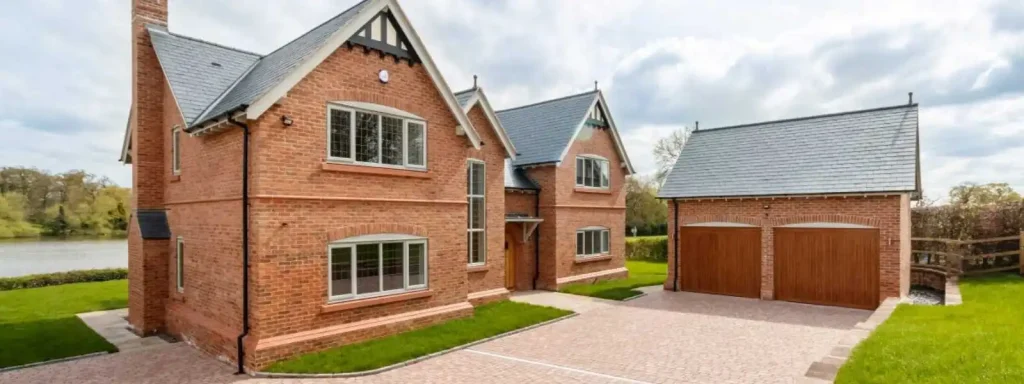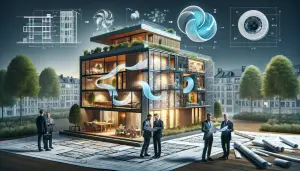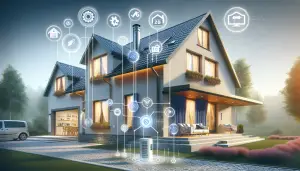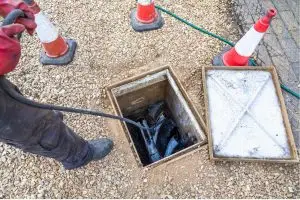Understanding Airtightness
Airtightness is a pivotal concept in the realm of energy-efficient housing. It refers to the ability of a building’s envelope, including walls, roof, and floors, to effectively prevent uncontrolled air leakage. Similar to how insulation acts as a barrier against heat transfer, airtightness acts as a barrier against the movement of air. This is crucial because air leakage can result in the escape of heated or cooled air, leading to increased energy consumption for maintaining comfortable indoor temperatures.
Air Leakage and Airtightness
Air leakage occurs when gaps, cracks, and openings in a building’s construction allow air to infiltrate or escape without control. Airtightness, on the other hand, involves sealing these gaps to minimize unintended air movement. This is particularly important in energy-efficient homes, where maintaining a controlled indoor environment is paramount. By sealing gaps and ensuring a well-constructed airtight envelope, energy losses due to air leakage are significantly reduced, leading to improved energy efficiency and lower utility bills.
Measuring Airtightness
Airtightness is quantified through specialized testing that measures the rate of air leakage under specific conditions. This involves creating an artificial pressure differential across the building envelope, typically 50 Pascals, and measuring the volume of air that leaks in or out per hour. This measurement is expressed as Xm³/hr/m²@50Pa, where “X” represents the amount of air leakage. This testing is crucial for assessing the effectiveness of a building’s airtightness and identifying areas that may require additional sealing.
Attaining Optimal Airtightness
Achieving optimal airtightness involves meticulous attention to detail during the construction process. It requires identifying potential leakage points, such as around windows, doors, utility penetrations, and joints, and employing appropriate sealing materials and techniques. While building regulations may specify a maximum allowable air leakage rate, aiming for even lower levels can yield substantial energy savings and improve overall comfort.

Key Areas of Airtightness
Airtightness considerations extend to three primary areas within a home’s construction:
- Fabric Envelope: This includes the walls, floors, and roof. The choice of construction system can impact how easily a desired level of airtightness is achieved. Certain systems, like Structural Insulated Panels (SIPs) and Insulated Concrete Formwork (ICF), offer inherent airtightness advantages.
- Windows and Doors: Airtightness around windows and doors is crucial, as these are potential sources of significant air leakage. Proper installation, including sealing the junctions between frames and walls, is essential to maintaining airtightness.
- Penetrations: Openings for pipes, cables, and other utilities can compromise airtightness if not properly sealed. Attention to detail and using appropriate materials are key to preventing air leakage through these penetrations.
Ensuring Quality Control
Maintaining high levels of airtightness requires a proactive approach to quality control:
- Airtightness Champion: Designating a knowledgeable individual responsible for overseeing airtightness strategies and detecting potential leakage points can enhance the success of achieving optimal airtightness.
- Site Operative Education: Educating construction workers about the importance of airtightness and training them to recognize potential issues can prevent accidental damage to the airtight envelope.
- Forward Planning: Strategically planning the construction sequence to ensure that airtightness measures are implemented correctly at each stage can minimize errors and ensure consistency.
- Design Alignment: Ensuring that the design aligns with airtightness goals from the outset helps avoid challenges during construction and reduces the risk of costly modifications.
The cornerstone of energy-efficient home construction
Airtightness is a cornerstone of energy-efficient home construction. Its role in preventing heat loss, enhancing comfort, and reducing energy consumption is undeniable. By prioritising airtightness and implementing effective sealing strategies, homeowners and builders contribute to sustainable living environments that offer lower energy bills and improved indoor comfort.




